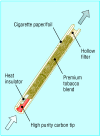Harm reduction
- PMID: 15073074
- PMCID: PMC387486
- DOI: 10.1136/bmj.328.7444.885
Harm reduction
Figures






References
-
- Tobacco Advisory Group of the Royal College of Physicians. Regulation of nicotine intake by smokers, and implications for health. In: Nicotine addiction in Britain. London: RCP, 2000. (A report of the Tobacco Advisory Group of the Royal College of Physicians, Chapter 6.)
-
- Stratton K, Shetty P, Wallace R, Bondurant S, eds. Clearing the smoke: assessing the science base for tobacco harm reduction. Washington, DC: National Academy Press, 2001. - PubMed
-
- Ferrence R, Slade J, Room R, Pope M, eds. Nicotine and public health. Washington, DC: American Public Health Association, 2000.
-
- Tobacco Advisory Group of the Royal College of Physicians. Protecting smokers, saving lives. The case for a tobacco and nicotine regulation authority. London: RCP, 2002.
-
- National Cancer Institute. Risks associated with smoking cigarettes and low machine-measured yields of tar and nicotine. Bethesda, MD: US Department of Health and Human Services, National Institutes of Health, National Cancer Institute, 2001. (Smoking and tobacco control monograph No 13; NIH publication No 02-5074.)
Publication types
MeSH terms
Substances
LinkOut - more resources
Full Text Sources
